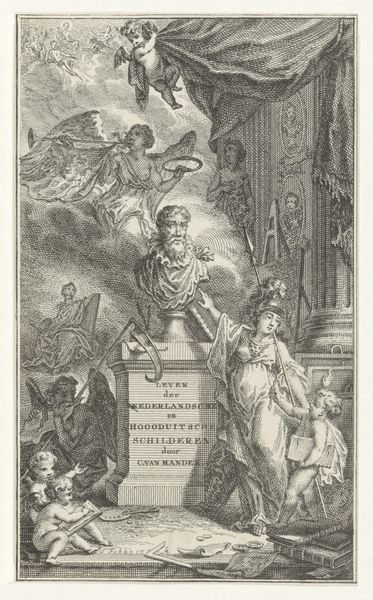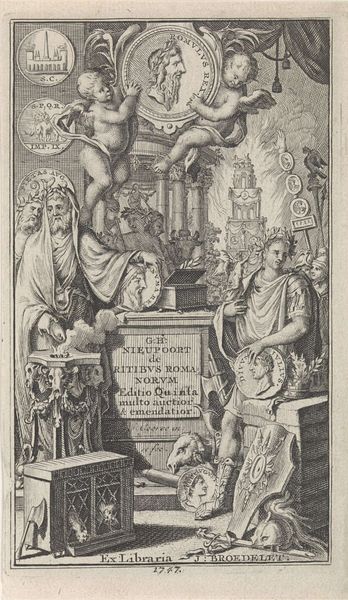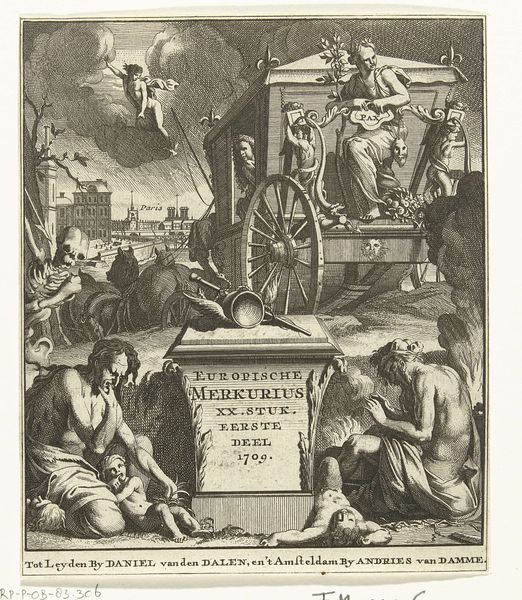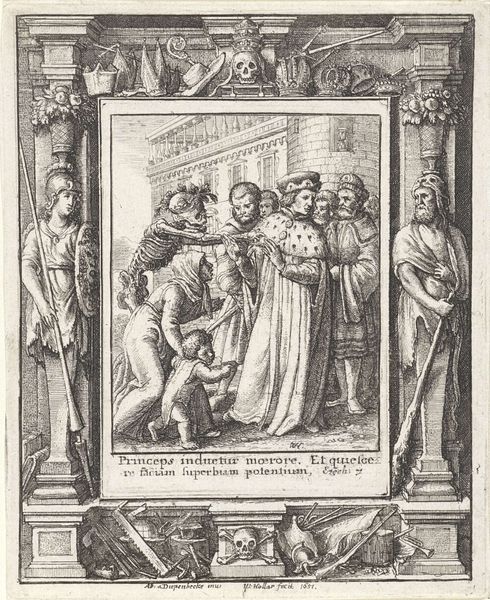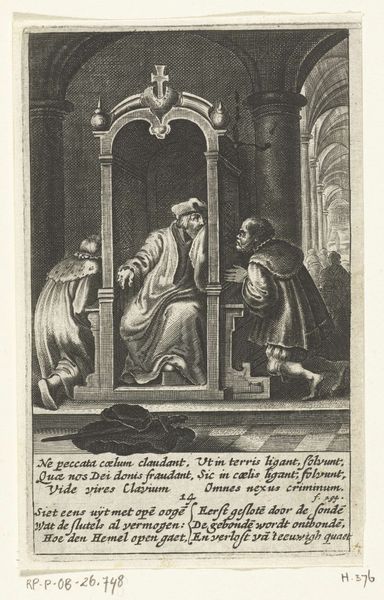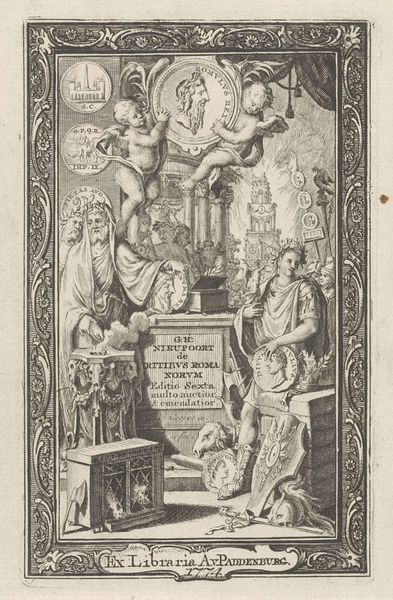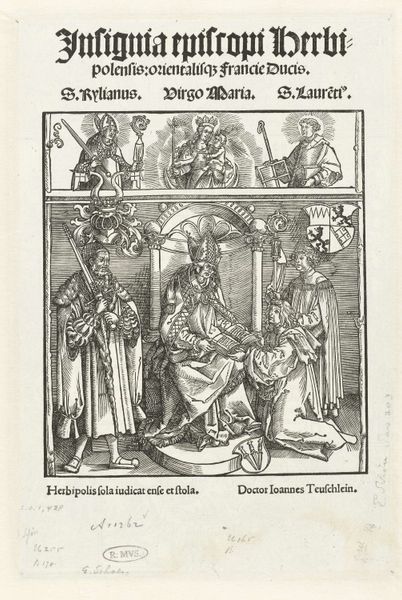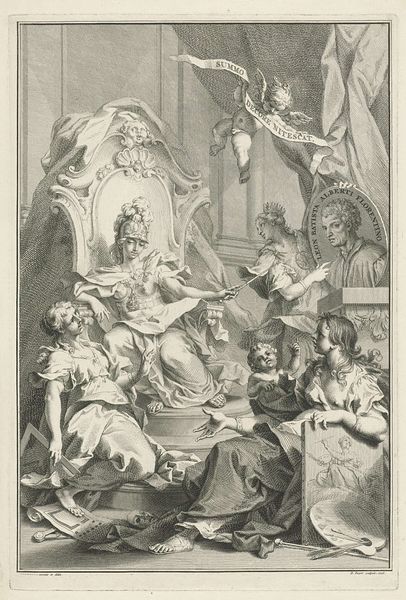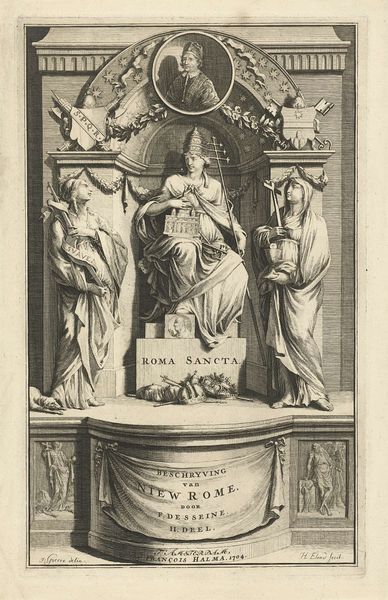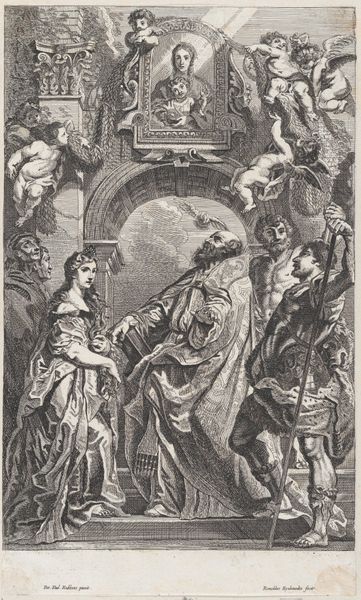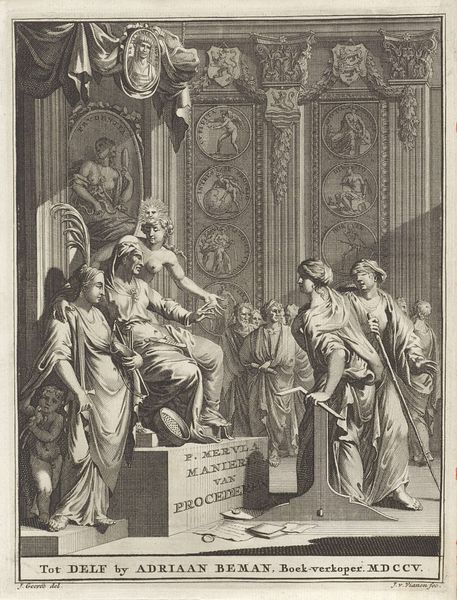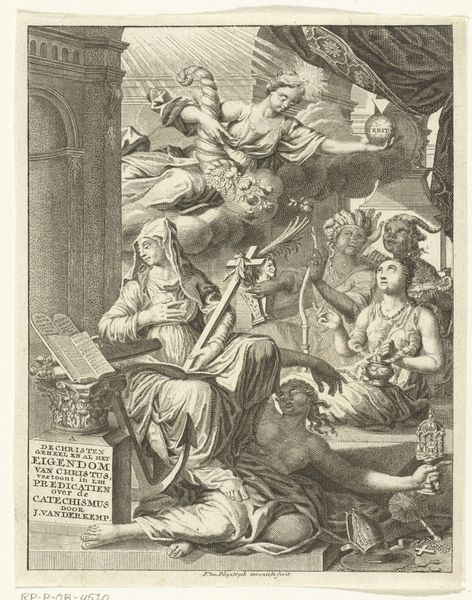
print, engraving
#
allegory
#
baroque
# print
#
figuration
#
line
#
history-painting
#
engraving
Dimensions: height 295 mm, width 174 mm
Copyright: Rijks Museum: Open Domain
Curator: Let's discuss this intriguing engraving from 1648, "Hertog met personificatie van een stad" (Duke with Personification of a City), created by Pieter de Jode II. It resides here in the Rijksmuseum. What's your initial take? Editor: Immediately, I'm struck by the stark, almost graphic quality. The strong lines, typical of engraving, lend it a forceful directness, yet the layers of allegory are heavy and feel… cumbersome. The materiality of the print is fascinating in its ability to carry so much social weight. Curator: Indeed. This work functions as both a historical record and political statement. The Duke represents power, while the city is personified, subservient but also pleading. The backdrop includes banners that signal historical events. Consider how prints like these shaped public opinion during times of war and treaty negotiations. Editor: Absolutely, the *making* of this image is completely entwined with the making of history, then. You’ve got Justice, with scales and sword, positioned symmetrically with a woman representing Antwerp, along with the lion... all these symbolic components tell us this was less about artistry, and more about delivering a calculated message for consumption. How accessible and widely distributed were these prints then? Curator: Quite accessible. Prints allowed ideas to spread rapidly across Europe. In times when literacy was not widespread, visual narratives were extremely effective for conveying complex messages and reinforcing power structures. And clearly tailored for the mercantile elites given their references. Editor: I’m most interested in the way de Jode uses the very *act* of engraving, its meticulous, labour-intensive nature, to emphasize control and authority, much like the Duke depicted. The dense cross-hatching and detailed rendering are clearly tools to display dominance through skill. The use of paper and ink transforms the sociopolitical landscape. Curator: Exactly! And think of where it was sold: "In de witte Lelie," the white lily. Even that refers us to symbolic spaces of commerce and meaning making in Amsterdam’s infrastructure. Editor: Yes! It reframes what is to be “high art.” Very powerful. After delving a little deeper, I look at the image quite differently now! Curator: Likewise. Seeing how it connects historical figures to the practical aspects of material production always brings new meaning to my perspective on it.
Comments
No comments
Be the first to comment and join the conversation on the ultimate creative platform.
